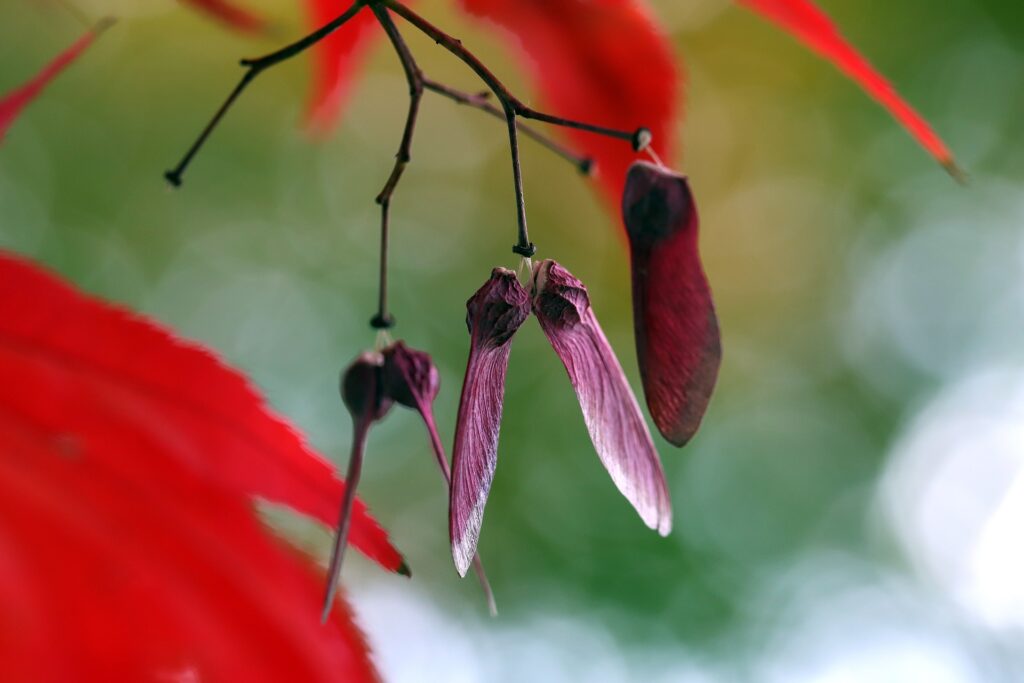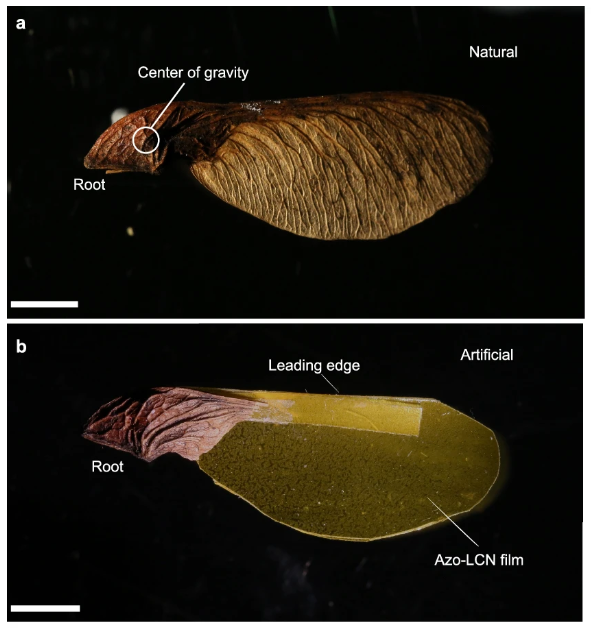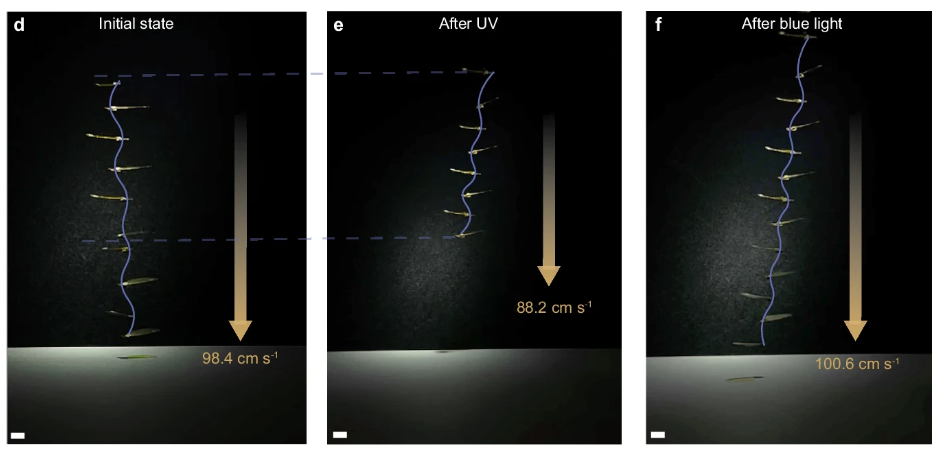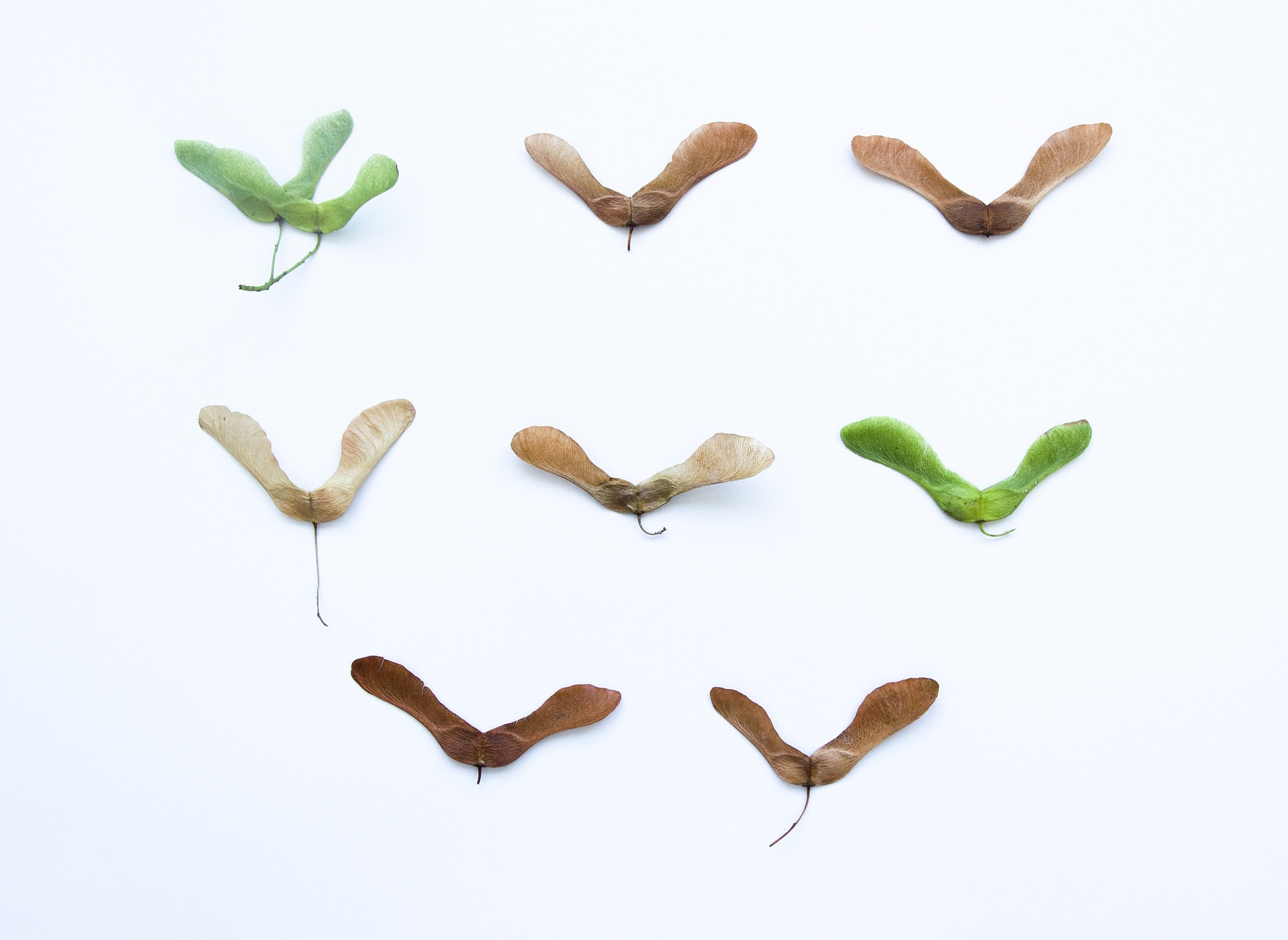The “samara” developed for seed dispersal
Are you familiar with “samaras”? A familiar example is the “maple,” which has seeds attached to a propeller-like pericarp. The detached seeds spin as they float, and if there is wind, they are carried far away. Another example is the “Java cucumber seed,” which has a glider-like shape and glides on the wind to move far away. If the place they land is suitable for germination, they will sprout and expand their living area in search of more comfortable locations. In this way, some plants have developed pericarps into the form of “samaras” suitable for seed dispersal.

Biomimicry of samaras
A study has been reported that mimics this characteristic structure of “samaras” and hacks it with additional new functions.
Photochemically responsive polymer films enable tunable gliding flights
In this study, the structure of the maple samara was recreated with photoresponsive polymer films to make artificial maple seeds. The polymer film of the artificial seeds is thin, and when shaped like a maple samara and attached to seeds taken from the samaras, it almost perfectly replicates the weight of the natural samara. An even more interesting feature is that the polymer film used to mimic the samara is “photoresponsive” and can change its structure when exposed to light. What changes does photoresponsiveness bring to the artificial seeds?

Gliding time extended with UV exposure
The polymer film mimicking the samara deforms when exposed to ultraviolet light. When UV light is applied to the artificial seeds, the shape of the mimicked samara changes, altering the flight characteristics of the artificial maple seeds. The fall speed of natural maple seeds was 72.1 cm/s, whereas the artificial seeds showed a slightly faster fall speed of 98.4 cm/s. However, when the artificial seeds were deformed by UV light, the fall speed slowed to 88.2 cm/s, closer to the natural maple seeds’ fall speed! This result indicates that it is possible to control fall speed and airtime through light exposure.

Considering potential applications
The main goal of the research is to develop technology suitable for creating lightweight flying robots. However, the unique aspect of controlling with light suggests other possible applications.
For example, it might be possible to control the range of ultra-small sensors or pesticide dispersion. The flight distance of dispersed objects could be adjusted by the duration of UV exposure. Additionally, it would be possible to create robots that change their flight characteristics between day and night. Furthermore, with advancements in laser technology, it might be possible to pinpoint the photoresponsive structure and change its characteristics in flight.
With creative ideas, various structures can be realized. Please give it some thought!



コメント